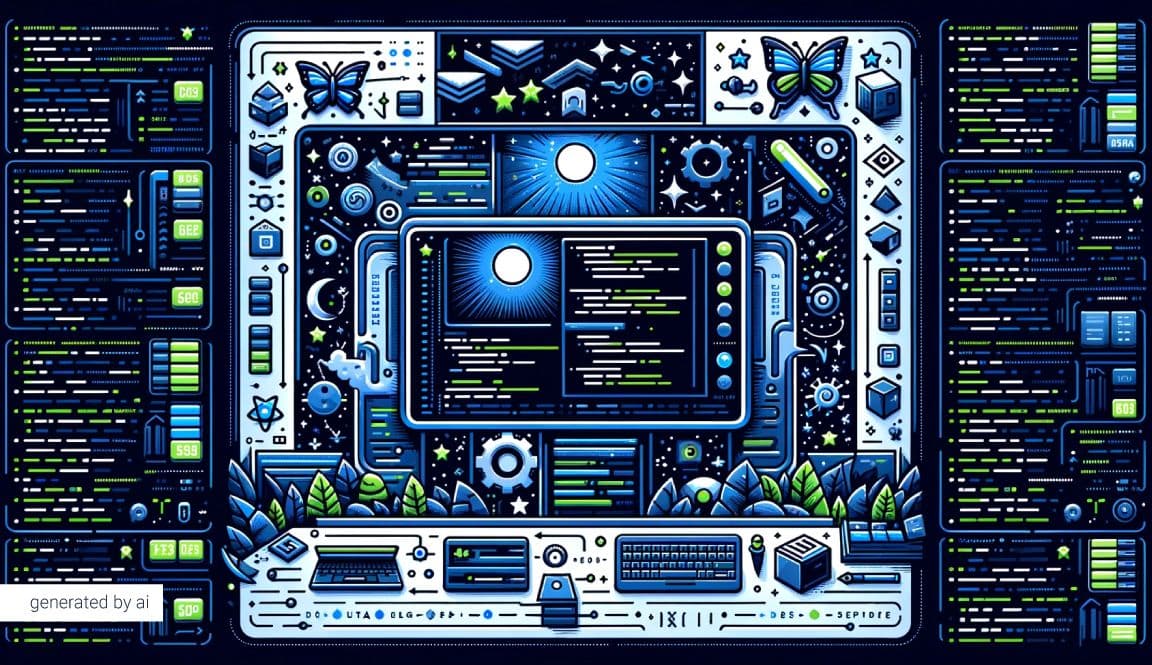
What is Refactoring?

What is Refactoring?
Throughout their lifecycles, software systems inevitably undergo changes, whether minor or significant. The long-term use of software often leads to contributions from various developers, which, coupled with advancements in technology and ongoing enhancements, can result in the accumulation of poorly written code.
No developer intends for their code to be deemed poor by others in the future. During the software development phase, specific methodologies are followed with the goal of producing the best possible product. However, this is not always sufficient. In such cases, the code written may require what is detailed below as the refactoring process.
Refactoring is the process of reorganizing the existing code without altering its functionality. It involves identifying problematic sections and improving them. This may include removing redundant parts and rewriting sections of code to enhance readability and performance, ensuring the software evolves in line with technological advancements.
The objective of refactoring is not to add new features but to improve the quality of the existing code. Let’s delve into why refactoring might be necessary for a functioning piece of software.
Why is Refactoring Done?
You might wonder why there would be a need to change a software system that is already working. During the software development process, developers aim to write the cleanest, most efficient, readable, and maintainable code possible.
Despite efforts to write the best code, writing software code is only one phase of product development. The development team must develop the software within a certain timeframe and financial constraints. The need to meet delivery deadlines and financial limitations can lead to some parts of the software not being as clean as desired.
Limited time can restrict developers from planning to coding, while financial conditions relate to everything from the number of people working on the project to the resources expended over the software's lifecycle. Moreover, these reasons apply not only during the initial coding but also affect the ongoing process. Even if the code was clean at the outset, subsequent maintenance phases can, due to time and financial constraints, make the code increasingly complex and difficult to read.
Another reason for the necessity of refactoring is technological advancements. Code written years ago might still work now and might have even performed exceptionally well when it was developed. However, better alternatives may have emerged since then. Software can be updated through refactoring to better integrate with these advancements, enhancing overall performance and maintainability.
When Should You Refactor Code?
The time to refactor code often reveals itself through several warnings, known in software as "code smells." These indicators should be taken seriously by the development team.
Developers have established several principles for writing clean code, such as the Rule of Three and DRY (Don't Repeat Yourself). These principles aim to reduce code repetition and ensure clean code writing. Violations of these principles are clear indicators that it's time to refactor.
The Rule of Three suggests that if a pattern in your code is repeated three times, it should be refactored. This principle encourages developers to use inheritance, classes, and interfaces more efficiently. DRY is a principle of software development that advises everything should be done once, emphasizing the elimination of duplication within the software.
How is Refactoring Done?
The process of refactoring code begins with a solid planning phase. There is existing software that is currently operational, undergoing a maintenance process, and may require new functionalities. It is necessary to allocate developer resources to the refactoring process without disrupting other workflows. The refactoring process should become a part of the regular daily code development cycle.
Refactoring is performed by making minor changes to the code and frequently testing these changes. The process is not bound by strict rules; each team can develop its unique approach. There are some widely accepted techniques within the refactoring process.
Red, Green, Refactor (Red, Green, Refactor)
The most popular and widespread refactoring technique involves applying the principles of test-driven development (TDD) to the refactoring process. Test-driven development is an approach that requires writing tests before writing the code itself. This refactoring technique consists of three distinct phases:
- This initial stage determines what needs to be developed. A test is prepared that the code will need to pass if it performs as expected.
- In this stage, code is written that can pass the prepared test.
- This final stage involves examining the code that has passed the test to see how it can be improved further.
Editing Methods (Composing)
This technique focuses on refactoring large classes and methods within the code that are long and difficult to understand. It can be applied in two ways: extraction and inline.
- In the extraction process, the code is broken down into smaller pieces. Each of these smaller pieces is assigned to separate methods and called upon when needed.
- In inline refactoring, the goal is to reduce the number of methods. Unnecessary methods are removed.
Refactoring with Abstraction
If you're dealing with a large codebase that needs refactoring, you might consider using abstraction to refactor it. The goal of abstraction is to reduce code repetition and, thereby, minimize unnecessary clutter within the codebase. This can be achieved through two different techniques.
- With the "pull up" method, methods that perform similar tasks in subclasses are moved up to a superclass.
- In the "push down" method, if a method in the superclass is used in only one or a few subclasses, it is moved down to the relevant subclass(es).
Moving Properties Between Objects
This involves reorganizing functionality among classes within the code. For instance, a method might be used more by other classes than the one it's currently in. The appropriate action is to move the method to the class where it's used the most. If it's still needed in its original location, it should be called from its new location. If it's no longer needed in the original place, it can be deleted.
Simplifying Methods
This practice aims to reduce the complexities of methods, making their logic easier to understand and maintain. The goal is to transform long methods into shorter, cleaner versions that are focused on a more specific purpose.
Preparatory Refactoring
If you're considering the need to refactor your codebase before adding new developments or making significant changes, choosing to refactor the code beforehand might be a better option.
The aim is to leave behind simpler, more readable, and cleaner code for future enhancements. Refactoring can be applied each time a new function is added to your code.
What Should Be Considered During the Refactoring Process?
You can ensure the effectiveness of the modifications and the correctness of the refactoring process through several checks. After the adjustments, the code should be clean, with the previous complexity and readability issues resolved. The refactoring process should not introduce new functionalities to the software, nor should it result in the loss of any actively used features. The code should undergo repeated tests at every step. Refactoring should become an integral part of the programming process.
What are the Advantages of Refactoring?
The refactoring process extends the life, enhances the performance, and improves the understandability of the software, laying a solid foundation for future developments. Let's look at some of the benefits of refactoring:
- Refactoring makes the code simpler and more understandable, easing the reading process and thus aiding subsequent developers in adapting to it.
- It facilitates the detection of future errors and accelerates the maintenance process.
- When developing, having knowledge of the old code is necessary. Simplified code makes adaptation easier for developers.
What are the Disadvantages of Refactoring?
Turning to the disadvantages, reorganizing code that is already functioning and has had additions made over many years requires additional manpower. To list some disadvantages similarly:
- The refactoring process requires meticulous planning. Allocating extra time for this task by the development team can disrupt or slow down other development processes.
- Since writing clean code is the main goal during the code reorganization process, developers spend more time working on the code.
- Allocating workforce to refactoring also means allocating financial resources to it. If refactoring is not done correctly, it can lead to new problems.
Refactoring Advantage Disadvantage Evaluation
When evaluating the pros and cons, the long-term benefits of the refactoring process undoubtedly emerge as significant. In the software lifecycle, from adding new features to maintenance tasks, refactoring has positive effects on all processes.
If software has been used for many years and will continue to be used, many developers will work on it. When leaving a legacy of clean code becomes the main goal in this ever-changing cycle, the adaptation process for future developers to the project becomes easy and flawless. This accelerates the software development process and allows more time to be allocated to new features.
Refactoring might appear as a complex topic for those new to software development. As you gain experience in coding, you will better understand that there are different ways to accomplish a task. In your software development career, you may not always have the opportunity to be involved in a project from its inception. Most of the time, when you join a team, you will be working on an existing project that may have been started years ago and developed by many developers. When faced with such a situation, you will better appreciate the importance of refactoring.
If the code you are working on becomes increasingly complex, moves away from clean coding practices, or becomes difficult to enhance with new functions, it is time to review that code. Many methods for refactoring are listed above, all with the underlying goal of simplifying and cleaning the code. You should identify the problematic parts of the code and continuously test with minor changes to carry out the refactoring process.
If your goal is to have a career in the technology field, you can participate in the completely free Bootcamp training programs prepared by Techcarrer.net. With Bootcamps prepared in various fields from data analysis to test engineering, from game development to backend development, you can take the first step towards your dream career.
FAQ
Is refactoring always preferred?
The process of refactoring software might be reconsidered when there is a substantial amount of code that needs to be organized and, after evaluations, the disadvantages of undertaking refactoring outweigh the benefits. It might be decided to rewrite the code instead.
Where can I follow job postings in the technology field?
You can follow the most up-to-date job postings in the technology sector on the job listings page of Techcarret.net. With the help of filters, you can sort through the listings to find the ones most suitable for you and apply.
What is a hiring challenge?
A Hiring challenge is a competition where you try to solve Android, iOS, and algorithm problems prepared by companies within a given timeframe. Hiring challenges, which expect you to bring your creativity to the forefront, offer you the opportunity to work at your dream companies.
Who can participate in hiring challenges?
Anyone interested in having a career in technology or who already has a career in the technology field can participate in hiring challenges organized by Techcareer.net.



